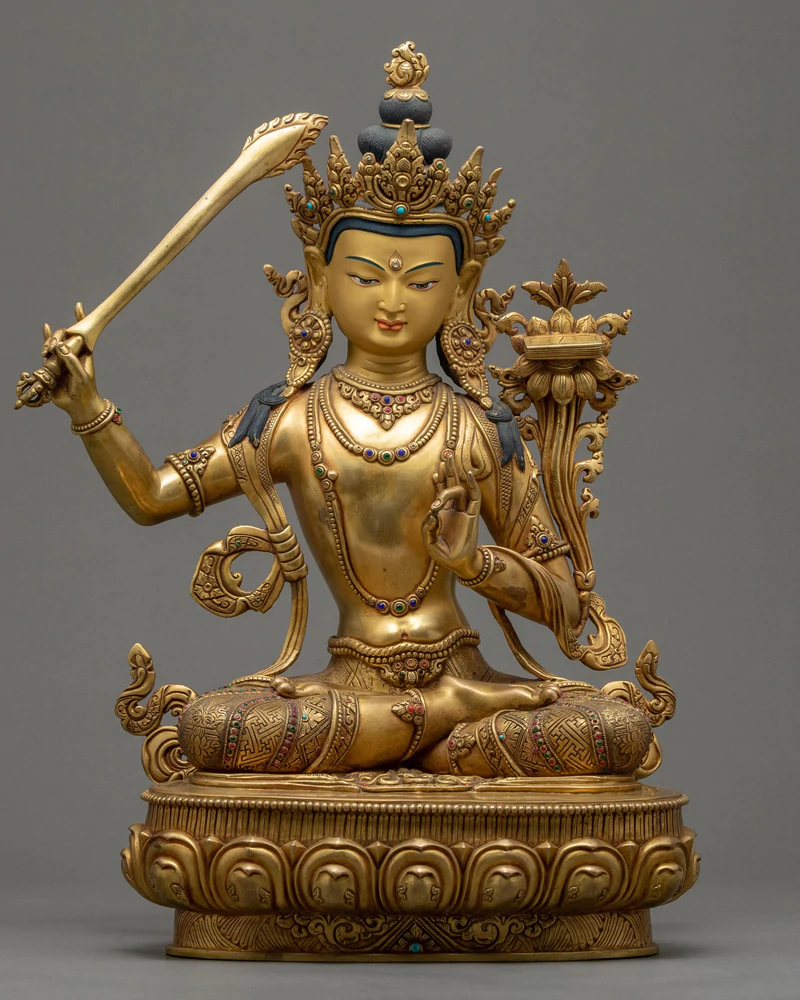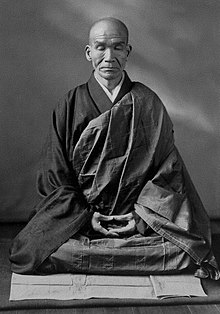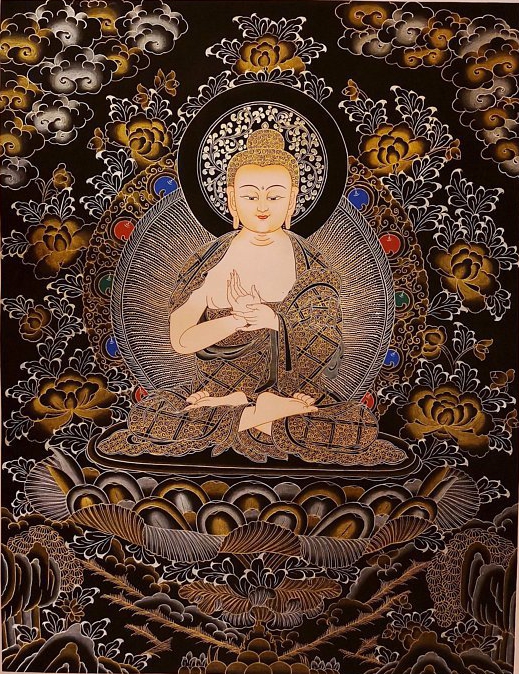
It is a rare person who is awake and free of all habitual tendencies. The sword of discrimination can keep us from falling to extremes in our awakened life.
Forms of awakening primarily based on using the mind to find Consciousness can sometimes fall to the extreme of splitting off one part of the ego from the rest. This can happen when there is not enough clarity to distinguish between a subtle form of ego-I from Consciousness Itself.
Forms of awakening based primarily on transmission, energy, and presence can sometimes fall into the extreme of over-identification with feelings of bliss and pain. This can happen when there is not enough clarity to distinguish between Consciousness and Radiance or feeling.
The non-separateness of Consciousness (Shiva) and Radiance (Shakti) does not make them exactly the same thing, and discrimination is essential in our awakened lives.
The three dimensions of reality: Formless Consciousness, Subtle Energy Feeling and Gross Matter, though non-dual, are worth distinguishing.
That three-layered description is probably the shortest version of an ancient view that was nearly universal in the past. You can find versions of it in Platonism, Neoplatonism, Hinduism, Buddhism, Sufism, Jewish and Christian Mysticism.
The Importance of Discrimination
It can be helpful to have a metaphysical picture in mind as a kind of context, so we use a form of the traditional notion of the “great chain of being” in which Consciousness emanates Energy, and then Energy manifests solid or gross form.
It can be a useful thought picture as a way to organize things in your mind. For some people, it intuitively makes sense. For others, it is a direct meditative experience: directly recognizing it without thinking, resting in it, in a state of contemplation. Of course, you can work with energy even without having experienced this picture.
I make use of it particularly in the three nodes of identity.

In the big picture, energy is always effortlessly radiating from Consciousness and is automatically self-liberating.

There is also the far more common experience from a more dualistic perspective, in which a person’s experience transforms from suffering to freedom. Even among those who have had an experience of effortless liberation, there is often a phasing in and out of it. In that case, discrimination is crucial.
In day-to-day life, what we experience is that we have a body, and are in that body. We are aware of the body, and we’re aware of objects, and we have a feeling-sensation of being the body. From that standpoint, in practice, it comes down to learning to free energy and attention from patterns that we feel confine us. When this transformation happens, there is a visceral, immediate sense of feeling free, of feeling connected and spacious. You don’t have to be in a higher non-dual Samadhi state experiencing an expanded energy field to benefit from that letting go.

By allowing yourself to release bound energy and attention, you have a fuller experience of all the rest of the Tapestry Mandala as well. You increase your capacity to become more present to what is, at any given moment. Here, discriminating awareness is key in freeing us from unnecessary suffering.
In some forms of Self-Inquiry and meditation, we give attention to the “noticer” or a discriminator. It’s the part of your mind that’s checking things as in “Okay, I’m aware of sound and so sound is an object to me. I’m the subject who’s aware of it.” It’s a kind of quick checking like “Uh-huh, I’ve got that, all right.” But it doesn’t think out a sentence like that, it’s binary, and it’s immediate. It compares. It just distinguishes one thing from another and it’s always functioning very close to our experience of ourselves. It’s the part of the mind that simply sees the difference between each and every thing in our experience. It simply notices a distinction rather than thinking about content.The discriminator function is what sees a difference and it’s also that which makes it possible to free energy and attention from stuck patterns.

It’s crucial to develop that discriminating ability and to cultivate it but we can put it down like any other tool when it’s completed its job. You want to be able to put it aside, but you also want to be able to pick it up again later, whenever it’s needed. Without discrimination, you don’t have the capacity to distinguish one thing from the other. It’s a necessary, valuable tool.
Discrimination can also improve our concentration of attention. Our attention is often unconsciously and habitually hanging out in various places, but instead, at any moment you can ask yourself, “Where’s my attention now?” Discrimination is our ally when it’s developed.

One reason people learn to meditate is to develop this kind of discrimination and concentration. That is to say, the ability to exercise choice about where to place your attention can happen only if there is a strong “noticer” or discriminating awareness.

With this sense of choice, the outcome for the rest of your day can be drastically different. We can often choose to stop giving attention to negative thoughts or negative thinking without repressing or disassociating from them, by just noticing.
“Spiritual bypassing” is a term sometimes used for denying our uncomfortable or negative feelings in the name of being “awake” or “spiritual.” However, for energetic transformation to occur, we instead need to be in touch with what we are actually feeling. We need to notice when we are rejecting what we feel, and that noticing is a form of discrimination in service of allowing us to feel what may be threatening or uncomfortable. There’s no reason for us to feel shame or “unspiritual” in regards to any feelings that may arise. This bypassing can sometimes lead to a heady, split, dissociated, “disembodied” state in which we are always above it all. We have wings but no roots.
When people first discover the door to transcendent states or abiding as Awareness, they may cling to states of emptiness and no-self. This is the ego clinging to its “enlightenment.” This is a common trap that we will eventually need to go beyond if we are to be whole. We can go beyond this by noticing if we are overriding or failing to stay in touch with what we are feeling.
However, there is also the other extreme in which we indulge the dance between thinking and feeling that exacerbates negative feelings and increases unnecessary suffering.

By choosing to place attention on more than your negative thoughts, you are not disassociating or being disembodied when exercising discrimination. When you clearly see that it no longer serves you to go back to the same thoughts that beat you up, you will just allow attention to see such thinking, feel such feelings and simply be present to them. That makes a huge difference, even if those thoughts continue to arise the same as they did before. In a very practical sense, that is an excellent use of discrimination.

(From The Tapestry of Being, Chapter 3: You Are a Multidimensional Field of Radiant Energy)
